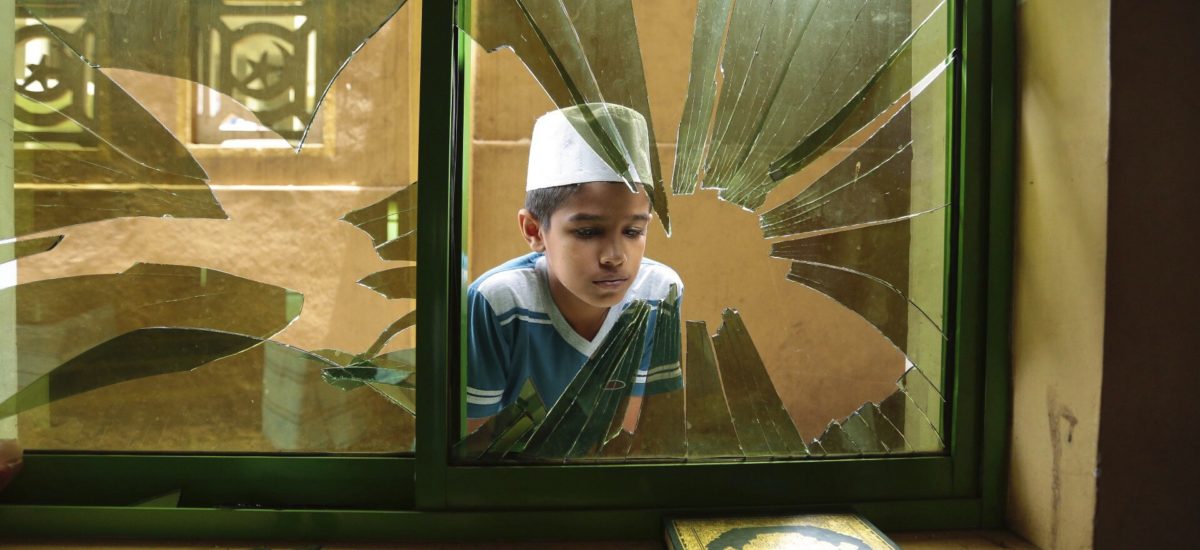Photo courtesy of South China Morning Post
In Sri Lanka, both mainstream and social media often portray Muslims in a negative light. This portrayal draws from pre-existing prejudices towards Muslims. These prejudices relate to some of the majority’s perceptions on an increase in the Muslim population, Muslim extremism and Muslim monopolisation of the market. This article focuses on one such pre-existing prejudice towards Muslims – the idea that Muslims monopolise the market.
This article contains two sections. The first section explains the prejudice, using examples from social media. The second section examines the underlying socio-economic drivers of the prejudice. To explain the prejudice, I will use the analogy of a keyhole. Social media helps us to get a glimpse of what is transpiring in society. In this sense, it is akin to a keyhole. Yet it would not be possible to learn the gravity of a problem if we are only looking through a keyhole. I first discuss what is visible through social media. I then set out to unlock the door – to look beyond social media – to better understand the issue at hand.
Peering through the keyhole
Social media enables users to raise objections and express solidarity. A number social media posts emerged soon after the Easter attacks in Sri Lanka. They both united and divided communities. Among such posts were calls for boosting Sinhala Buddhist owned businesses and boycotting Muslim owned businesses. Several Facebook groups called themselves Sinhala Buddhist consumers and sought to promote businesses that belong only to Sinhala Buddhists. At the same time, they targeted Muslim businesses and called for their boycott.
Social media users cited three arguments for boosting Sinhala Buddhists’ businesses and boycotting Muslim businesses. First, they positioned Muslims as dominating the market in Sri Lanka. The perception that Muslims monopolise businesses in Sri Lanka seems to drive social media users to act against Muslims. For instance, social media posts demanded the boycott of well-known brand names owned by Muslims. These posts relied on a perceived Muslim monopoly of the market. Second, social media users attributed Muslims’ success to their ‘crafty’ and ‘insular’ nature. Third, social media posts appealed to promoting exclusively Sinhala Buddhist areas as a way of upholding the Sinhala Buddhist identity and unity. Social media users referred to Maharagama and Kiribathgoda as examples of such areas and depicted those geographic locations as securing and sustaining the Sinhala Buddhist identity.
Looking beyond the door
Social media reflects a persistent problem in Sri Lanka. It sheds light on a prejudice that exists towards Muslims. This prejudice concerning Muslim monopolisation of the market continues despite a lack of evidence. What is the basis of this prejudice? Is it statistically proven? Even if it is proven, what is the real problem with Muslims dominating the market? Typically, frustration with social and economic inequality and the resulting anger tend to be directed against the bourgeoisie. Yet, in the current context, anger appears to be directed at Muslims – a distinct ethno-religious group – as opposed to capitalism or the economic elite.
Three factors underlie the prejudice. The first factor is enabled and strengthened due to the other two factors. First, commercial competition incentivises opportunistic creation and amplification of prejudice towards Muslims. There are two manifestations of this opportunism: 1. TV/newspaper commercials that identify businesses as Sinhala Buddhist businesses; and 2. social media campaigns that demand boycotts of Muslim businesses. There are also campaigns to both establish and maintain Sinhala Buddhist geographic areas devoid of Muslim businesses. The next two factors further enable this first factor.
The second factor concerns the Sinhala-Buddhist hegemonic position. Sri Lanka is characterised as a Sinhala-Buddhist nation, and social media users appeal to Sinhala Buddhists to unite around their identity. The justification they use for such appeals is to resist the alleged monopolisation of business by Muslims. Therefore, appeals made to promote the Sinhala Buddhist identity reinforce the prejudice towards Muslims when calling for boycotts of Muslim owned businesses and boosting of Sinhala Buddhist owned businesses. Consequently commercial competition, which encourages opportunistic creation and amplification of prejudice towards Muslims, is both enabled and strengthened when the Sinhala Buddhist hegemony is at play.
Third, as observed by Stanley J. Tambiah, Sinhala Buddhists can often display characteristics of a majority with a minority complex. Gehan Gunatilleke points out that this insecurity stems from the idea that Sinhala Buddhists exist only in Sri Lanka whereas Tamils, Muslims, and Christians are global communities. A negative consequence of such a complex includes ‘othering’ the Muslims. Muslims are subject to discrimination and tend to be treated as outsiders. Such discriminatory practices and exclusion of Muslims seem to have intensified in the aftermath of the Easter attacks. Anxieties and insecurities that the Sinhala Buddhist population is a ‘minority’ in their own ‘Sinhala Buddhist country’ support commercial competition which feeds off such insecurities. The more insecure the majority is, the more they are likely to promote Sinhala Buddhist owned businesses, areas and identity. As a result, the third factor enables and strengthens the first factor.
One of the prejudices towards Muslims in Sri Lanka concerns their perceived monopoly over the market. This prejudice brings to light three underlying factors: opportunism based commercial competition, Sinhala Buddhist hegemony and a majority with a minority complex. Unless these three drivers are addressed, the prejudice against Muslims is likely to persist.


